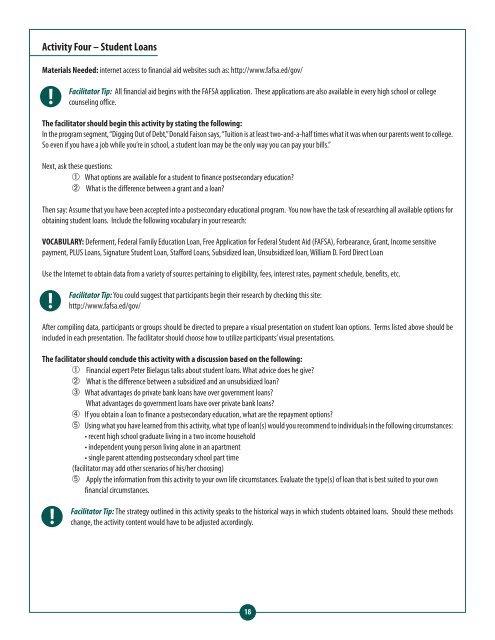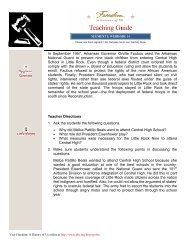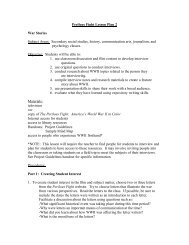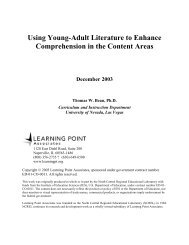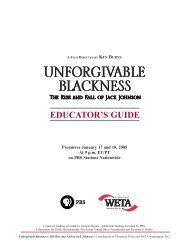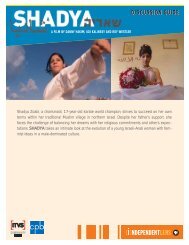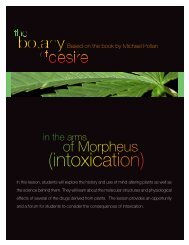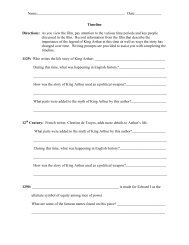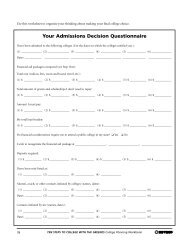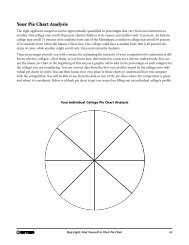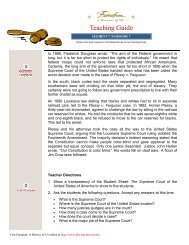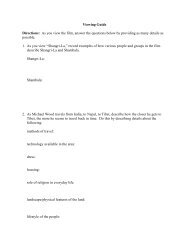Facilitator's Guide - PBS
Facilitator's Guide - PBS
Facilitator's Guide - PBS
You also want an ePaper? Increase the reach of your titles
YUMPU automatically turns print PDFs into web optimized ePapers that Google loves.
Activity Four – Student Loans<br />
Materials Needed: internet access to financial aid websites such as: http://www.fafsa.ed/gov/<br />
!<br />
Facilitator Tip: All financial aid begins with the FAFSA application. These applications are also available in every high school or college<br />
counseling office.<br />
The facilitator should begin this activity by stating the following:<br />
In the program segment,“Digging Out of Debt,”Donald Faison says,“Tuition is at least two-and-a-half times what it was when our parents went to college.<br />
So even if you have a job while you’re in school, a student loan may be the only way you can pay your bills.”<br />
Next, ask these questions:<br />
a What options are available for a student to finance postsecondary education?<br />
b What is the difference between a grant and a loan?<br />
Then say: Assume that you have been accepted into a postsecondary educational program. You now have the task of researching all available options for<br />
obtaining student loans. Include the following vocabulary in your research:<br />
VOCABULARY: Deferment, Federal Family Education Loan, Free Application for Federal Student Aid (FAFSA), Forbearance, Grant, Income sensitive<br />
payment, PLUS Loans, Signature Student Loan, Stafford Loans, Subsidized loan, Unsubsidized loan, William D. Ford Direct Loan<br />
Use the Internet to obtain data from a variety of sources pertaining to eligibility, fees, interest rates, payment schedule, benefits, etc.<br />
!<br />
Facilitator Tip: You could suggest that participants begin their research by checking this site:<br />
http://www.fafsa.ed/gov/<br />
After compiling data, participants or groups should be directed to prepare a visual presentation on student loan options. Terms listed above should be<br />
included in each presentation. The facilitator should choose how to utilize participants’ visual presentations.<br />
The facilitator should conclude this activity with a discussion based on the following:<br />
a Financial expert Peter Bielagus talks about student loans. What advice does he give?<br />
b What is the difference between a subsidized and an unsubsidized loan?<br />
c What advantages do private bank loans have over government loans?<br />
What advantages do government loans have over private bank loans?<br />
d If you obtain a loan to finance a postsecondary education, what are the repayment options?<br />
e Using what you have learned from this activity, what type of loan(s) would you recommend to individuals in the following circumstances:<br />
• recent high school graduate living in a two income household<br />
• independent young person living alone in an apartment<br />
• single parent attending postsecondary school part time<br />
(facilitator may add other scenarios of his/her choosing)<br />
e Apply the information from this activity to your own life circumstances. Evaluate the type(s) of loan that is best suited to your own<br />
financial circumstances.<br />
!<br />
Facilitator Tip: The strategy outlined in this activity speaks to the historical ways in which students obtained loans. Should these methods<br />
change, the activity content would have to be adjusted accordingly.<br />
18


